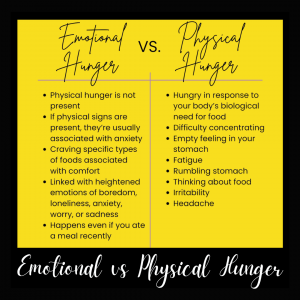
Emotional Hunger vs. Physical Hunger – How to Tell the Difference
Have you ever reached for a snack, not because you were hungry, but because you were tired, stressed, bored or upset?
You’re not alone. At BEEWEIGHED, we often talk about why we eat—not just what we eat. One of the biggest challenges on any weight loss journey is learning the difference between emotional hunger and physical hunger.
Recognising the difference is a powerful step toward feeling in control, eating mindfully, and smashing your goals.
🍽️ What Is Physical Hunger?
Physical hunger is your body’s natural signal that it needs fuel. It’s a biological response.
Signs of Physical Hunger:
It comes on gradually
Your stomach may growl
You feel low in energy or slightly lightheaded
Any food will satisfy it (even something simple and healthy)
Eating helps you feel better physically
What Physical Hunger Sounds Like:
“It’s been a few hours since I ate, and my stomach’s starting to rumble.”
“I feel a bit shaky, I think I need something substantial.”
This is true hunger—your body’s way of saying, “I need nourishment.”
😔 What Is Emotional Hunger?
Emotional hunger is driven by feelings rather than physical need. It’s your brain craving comfort, distraction, or a way to soothe something emotional—like stress, sadness, loneliness or even happiness.
Signs of Emotional Hunger:
It comes on suddenly and urgently
You crave specific comfort foods (usually high in sugar, fat or carbs)
You eat mindlessly or very quickly
You often still feel unsatisfied afterward
You may feel guilty, regretful or ashamed after eating
What Emotional Hunger Sounds Like:
“I’ve had a horrible day—I deserve a treat.”
“I’m bored, let me check the fridge.”
“I feel anxious, and chocolate will calm me down.”
🧠 Why Emotional Eating Happens
Life is full of triggers—big and small. And food can be an easy go-to because it offers instant relief. But the comfort is temporary… and it can lead to a cycle of guilt and more emotional eating.
Common Emotional Triggers:
Stress from work or home life
Boredom or loneliness
Celebrating a win
Coping with grief or anxiety
Tiredness or overwhelm
When we link food to emotions, it becomes a habit—and like any habit, it can be broken with awareness and support.
🔍 How to Tell the Difference: A Quick Check-In
Next time you feel the urge to eat, ask yourself these questions:
✋ Pause and ask:
When did I last eat? (If it’s been a few hours, it might be physical hunger.)
What am I hungry for? (If only chocolate will do, it might be emotional.)
How am I feeling right now? (Bored? Anxious? Tired?)
Am I eating to fill a feeling—or a physical need?
Will eating help the real problem?
If you realise it’s emotional hunger, that’s not failure—it’s a moment of growth and reflection.
🛠️ Tools to Manage Emotional Hunger
🧘♀️ 1. Feel the Feeling
Instead of numbing it with food, pause and name the emotion: “I feel anxious,” “I feel unappreciated,” “I feel alone.”
This builds self-awareness and breaks the automatic food response.
✏️ 2. Keep a Hunger Diary
Track when and why you eat. Patterns will emerge. Do you always snack at 9pm out of habit? Do stressful meetings trigger a biscuit binge?
🧩 3. Find Non-Food Comforts
Create a list of go-to “feel-good” activities:
Go for a walk or stretch
Listen to uplifting music
Phone a friend or BEEWEIGHED buddy
Write in a journal
Have a bath or paint your nails
🥗 4. Plan Regular Meals
Sticking to a structured eating routine helps prevent true hunger and gives your body and mind predictability, which can reduce emotional triggers.
🫶 5. Practice Self-Compassion
You are human. Emotional eating is normal and common. Recognise it without judgment, and move on with kindness and confidence.
🐝 BEEWEIGHED Wisdom
Learning to tell the difference between emotional and physical hunger takes time—but it’s a skill that brings lifelong benefits.
Each time you pause to check in with yourself, each time you choose to sit with a feeling instead of feed it—you are becoming more in tune with your body and your needs.
You deserve to feel nourished, not just full.
So next time you reach for the fridge, take a breath and ask yourself:
“What do I really need right now?”
And remember: you’ve got this—and we’ve got you.
DON'T FORGET TO CHECK OUT THE OTHER RESOURCES
SEO Keywords:
• slimming groups online
• online slimming groups
• calorie counting
• slimming groups Manchester
• slimming groups Cheshire
• slimming groups near me
• bariatric support online


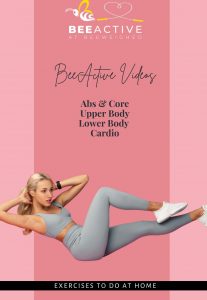
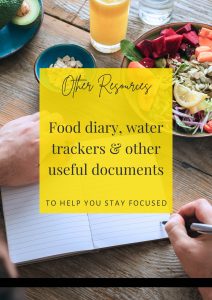
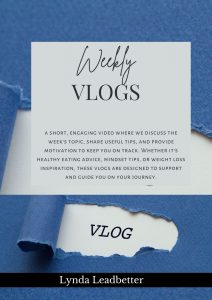
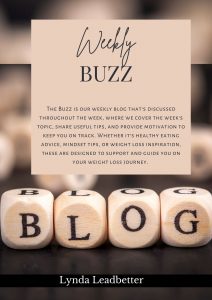
- #BariatricSupport, #BariatricSupportOnline, #BariatricWeightLossSupport, #beeweighed, #BestSlimmingGroupInMyArea, #BestSlimmingGroupUK, #caloriecounting, #CalorieCountingSupport, #CheshireWeightLossGroup, #HealthyLivingSupport, #JoinASlimmingGroup, #ManchesterWeightLossGroup, #OnlineCalorieCounting, #OnlineSlimmingGroups, #OnlineWeightLossSupport, #SlimmingGroupCheshire, #SlimmingGroupManchester, #SlimmingGroupsNearMe, #SlimmingGroupsOnline, #SlimmingGroupSupport, #slimmingworld, #SupportForWeightLoss, #WeightLossGroupsUK, #WeightLossHelp, #WeightLossJourney, #weightlosssupport, #weightwatchers, #ww
CHRISTMAS SURVIVAL
🎄 BeeWeighed’s Christmas Survival Guide 🎅 Stay on Track, Still Have Treats & Enjoy the Magic Guilt-Free! Ah, Christmas… the season of twinkling lights,
LOW CARB
Let’s Talk Low-Carb! Why Cutting Back on Carbs Can Work Wonders (And Still Be Delicious!) 🍳 Carbs. They’re fluffy, crunchy, crispy, chewy — and sometimes,
MINDFUL EATING
🍽️ Mindful vs. Mindless Eating: Which One Are You Doing? Let’s Find Out! 🧠✨ Have you ever found yourself finishing a whole bag of
